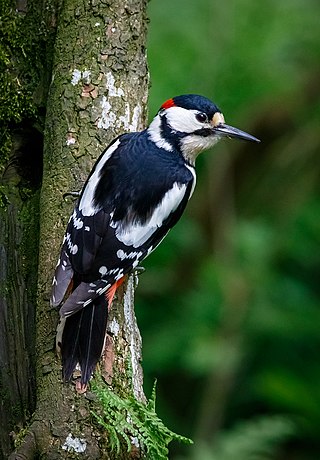
The great spotted woodpecker is a medium-sized woodpecker with pied black and white plumage and a red patch on the lower belly. Males and young birds also have red markings on the neck or head. This species is found across the Palearctic including parts of North Africa. Across most of its range it is resident, but in the north some will migrate if the conifer cone crop fails. Some individuals have a tendency to wander, leading to the recolonisation of Ireland in the first decade of the 21st century and to vagrancy to North America. Great spotted woodpeckers chisel into trees to find food or excavate nest holes, and also drum for contact and territorial advertisement; like other woodpeckers, they have anatomical adaptations to manage the physical stresses from the hammering action. This species is similar to the Syrian woodpecker.

The red-throated wryneck, also known as the rufous-necked wryneck or red-breasted wryneck, is a species of wryneck in the woodpecker family closely related to the Eurasian wryneck. Its three subspecies are resident in much of sub-Saharan Africa in open habitats with some trees. It is a slim, elongated bird about 19 cm (7.5 in) in length, with a small head, fine bill, long fan-shaped tail and cryptic plumage intricately patterned in greys and browns. The sexes look similar, although males are slightly larger. The diet of the adults and young is almost entirely ants at all stages of their life cycles. The call of the red-throated wryneck is a series of repeated harsh, shrill notes. When threatened, a bird will twist its neck and head in a snake-like manner while making a hissing sound, presumably to deter predators.
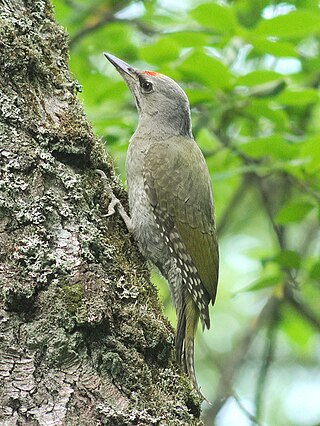
The grey-headed woodpecker, also known as the grey-faced woodpecker, is a Eurasian member of the woodpecker family, Picidae. Along with the more commonly found European green woodpecker and the Iberian green woodpecker, it is one of three closely related sister species found in Europe. Its distribution stretches across large parts of the central and Eastern Palaearctic, all the way to the Pacific Ocean.
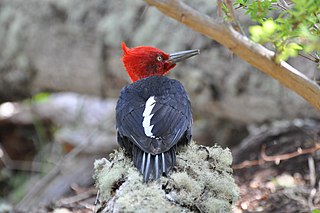
The Magellanic woodpecker is a very large woodpecker found in southern Chile and southwestern Argentina; it is resident within its range. This species is the southernmost example of the genus Campephilus, which includes the famous ivory-billed woodpecker.

The Japanese pygmy woodpecker or pygmy woodpecker is a species of woodpecker. It is found in coniferous and deciduous forests in Russia, China, Korea and Japan. This species has also been placed in the genus Dendrocopos or Picoides. The International Union for Conservation of Nature (IUCN) has assessed it as a least-concern species.

The Hispaniolan woodpecker is a medium-sized woodpecker endemic to the Caribbean island of Hispaniola.
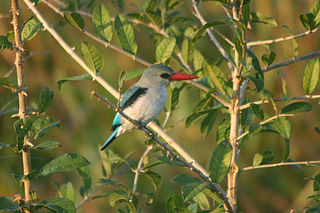
The mangrove kingfisher is a kingfisher in the genus Halcyon. It is similar in appearance to the woodland kingfisher. It is found along the eastern coastline of Sub-Saharan Africa, living in woodland, along rivers, and in estuaries and mangrove. The International Union for Conservation of Nature (IUCN) has assessed it as being of least concern.

The golden-mantled racket-tail is a species of parrot in the family Psittaculidae. It is endemic to Indonesia. Its natural habitats are subtropical or tropical moist lowland forest and subtropical or tropical moist montane forest up to an altitude of about 3,000 metres (9,800 ft).

The pink-necked green pigeon is a species of bird of the pigeon and dove family, Columbidae. It is a common species of Southeast Asia, found from Myanmar and Vietnam south through to the major islands of Indonesia and the Philippines. It is a medium-sized pigeon with predominantly green plumage; only the male has the pink neck that gives the species its name. The species lives in a wide range of forested and human-modified habitats and is particularly found in open habitats. Its diet is dominated by fruit, in particular figs. Pairs lay two eggs in a flimsy twig nest in a tree, shrub, or hedge, and work together to incubate the eggs and raise the chicks. The species is thought to be an important disperser of fruit seeds. The species has adapted well to human changes to the environment, and can be found in crowded cities as long as fruiting trees are present.

The ashy flycatcher is a species of bird in the Old World flycatcher family Muscicapidae. It is found throughout sub-Saharan Africa, excluding the drier areas of South Africa, Botswana, and Namibia, where it inhabits subtropical or tropical dry forest, subtropical or tropical moist lowland forest, and savanna. It has a disputed generic placement, with different authorities variously putting it in Muscicapa, Fraseria, or other genera. Ashy flycatchers are mostly grey in colour, with pale grey or white underparts.
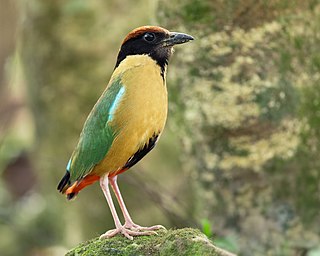
The noisy pitta is a species of bird in the family Pittidae. The noisy pitta is found in eastern Australia and southern New Guinea. It eats earthworms, insects and snails. Its natural habitats are temperate forests, subtropical or tropical moist lowland forest, and subtropical or tropical moist montane forest.

The bay woodpecker is a species of bird in the family Picidae.

The little green woodpecker, or golden-backed woodpecker, is a species of bird in the family Picidae. It is found in Africa, living in forest edges, clearings, and forest-shrub mosaics. The International Union for Conservation of Nature (IUCN) has assessed it as a least-concern species.

Stierling's woodpecker is a species of bird in the family Picidae. It is native to Malawi, Mozambique, and Tanzania where its natural habitat is tropical dry forests in the Eastern miombo woodlands ecoregion. It is threatened by habitat destruction. The bird is named in honour of the German bird collector N. Stierling.

The Andaman woodpecker is a species of bird in the woodpecker family Picidae. It is endemic to the Andaman Islands in India. Its natural habitat is tropical moist lowland forests. It is threatened by habitat loss.

The golden-naped woodpecker is a species of bird in the woodpecker family Picidae. The species is very closely related to the beautiful woodpecker, which is sometimes treated as the same species. The two species, along with several other species, are sometimes placed in the genus Tripsurus.

The great slaty woodpecker is a species of bird in the family Picidae. It is found across the Indian Subcontinent and Southeast Asia. A unique and basically unmistakable bird, it is the largest known species of woodpecker.
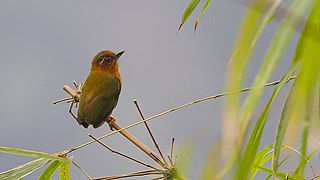
The white-browed piculet is a species of bird in the family Picidae. It is found in Bangladesh, Bhutan, Cambodia, India, Laos, Myanmar, Nepal, Thailand, and Vietnam. Its natural habitats are temperate forests and subtropical or tropical moist montane forests.

The white-tipped quetzal is a species of bird in the family Trogonidae found in Venezuela, Colombia, and Guyana. Two subspecies have been described. Pharomachrus fulgidus fulgidus is found in the mountains of northern Venezuela and Pharomachrus fulgidus festatus ranges through the Santa Marta mountains of northeast Colombia. Quetzals are iridescent and colourful birds found in forests, woodlands and humid highlands. The white-tipped quetzal has been a limited subject of research. Pharomachrus nests have been studied to analyse the effects of rainfall on breeding, however conclusions are based on single observations. On the IUCN Red list of threatened species, the white-tipped quetzal is listed as a species of least concern.

The Red-backed flameback, Lesser Sri Lanka flameback, Sri Lanka red-backed woodpecker or Ceylon red-backed woodpecker is a species of bird in the family Picidae. It is endemic to Sri Lanka, only absent in the far-north. It is sometimes considered a subspecies of the Black-rumped flameback.





















